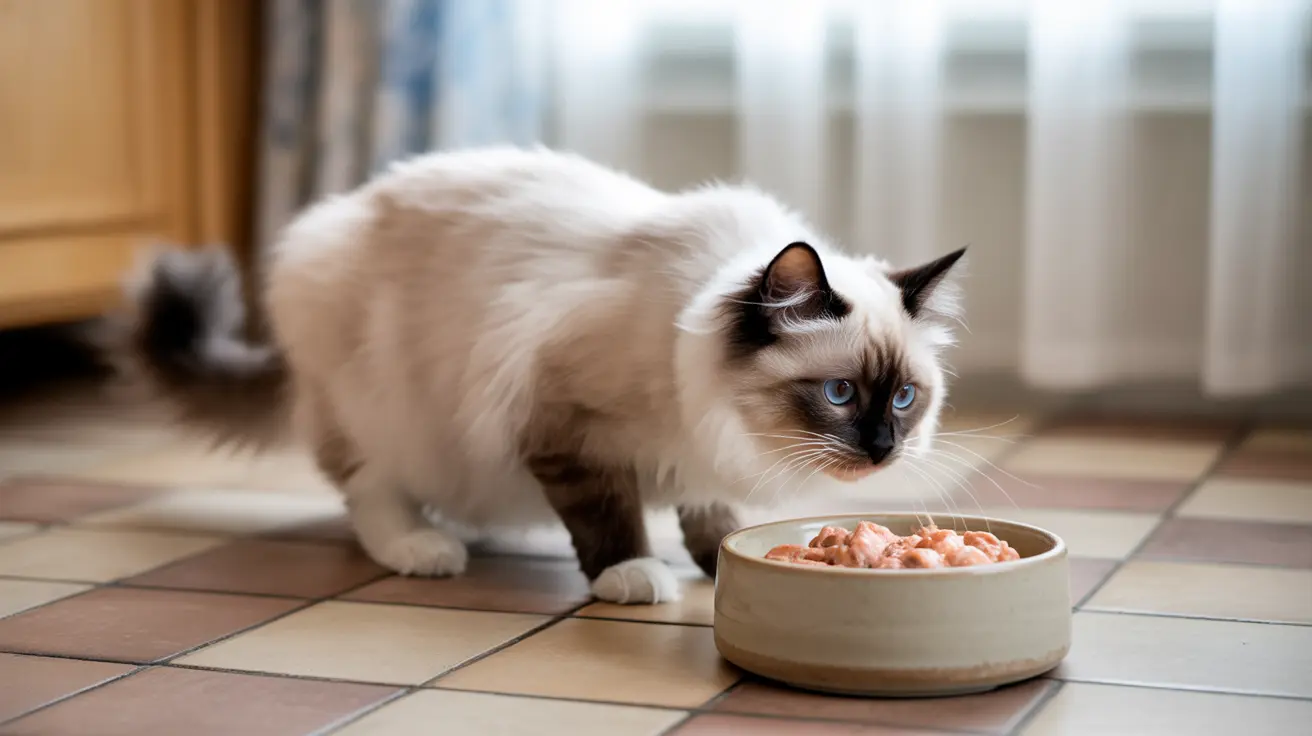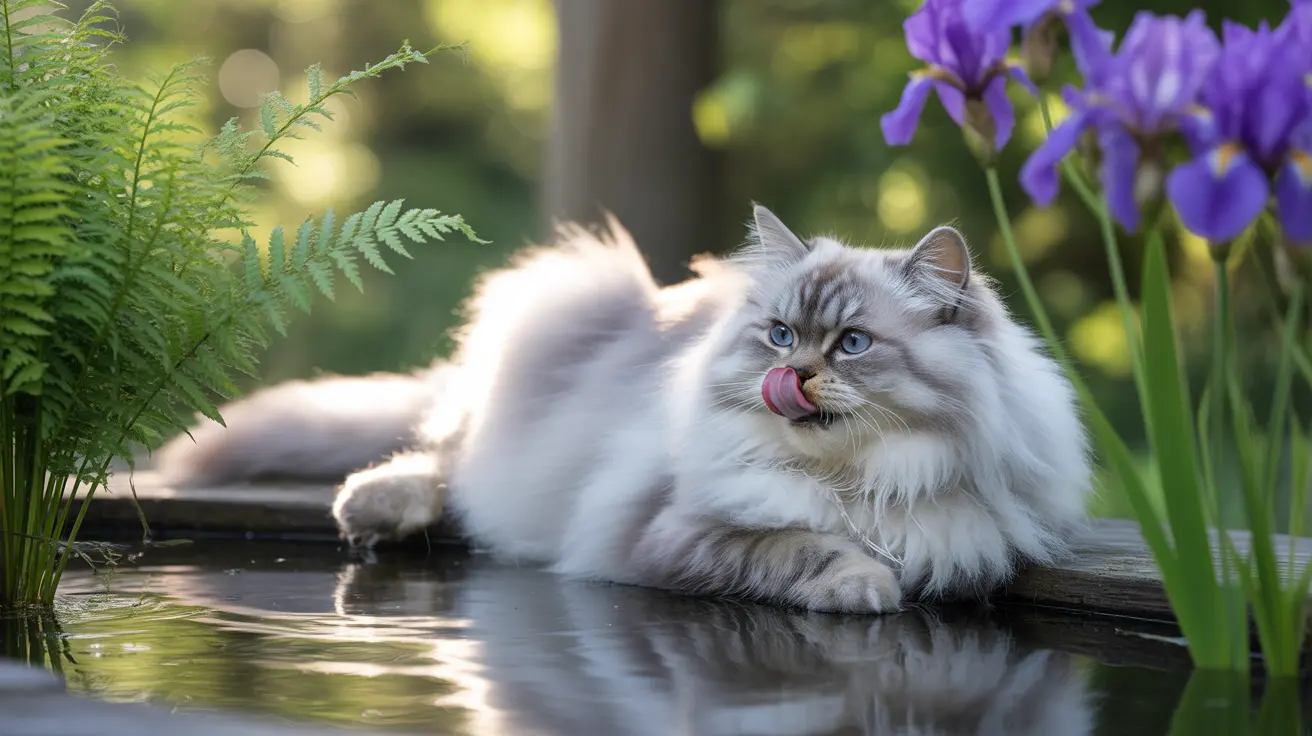Cat Refuses to Eat: Causes and Solutions for Worried Pet Owners
When your beloved feline companion suddenly turns away from their favorite meal, it can be deeply concerning. A cat that refuses to eat is not just being finicky – it's often signaling a serious underlying issue that requires immediate attention. Understanding the causes, recognizing the dangers of prolonged fasting, and knowing effective solutions can make the difference between a minor hiccup and a life-threatening emergency.
Unlike dogs or humans who can safely skip meals for extended periods, cats face unique physiological risks when they stop eating. Their bodies are designed to process frequent, small meals, and even 24-48 hours without food can trigger dangerous metabolic changes. Whether your cat is completely refusing food (anorexia) or showing reduced appetite (hyporexia), prompt action and proper intervention are essential for protecting their health and well-being.
This comprehensive guide will help you understand why cats stop eating, recognize warning signs that require immediate veterinary care, and learn practical strategies to encourage your cat to resume normal feeding habits while preventing serious complications.
Common Medical Causes Behind Appetite Loss
When a cat refuses to eat, organic diseases are often the underlying culprit. Understanding these medical conditions helps pet owners recognize when professional veterinary intervention is necessary rather than attempting home remedies alone.
Respiratory and Dental Issues
Upper respiratory infections significantly impact a cat's eating habits because nasal congestion prevents them from smelling their food properly. Since cats rely heavily on their sense of smell to identify and appreciate food, blocked nasal passages can make even their favorite meals completely unappealing. In these cases, wet foods with strong aromas often prove more successful in encouraging eating than dry kibble.
Dental disease presents another common barrier to normal feeding. Conditions such as gingivitis, tooth decay, or oral tumors create significant pain that makes chewing uncomfortable or impossible. Cats experiencing dental pain may show selective eating behaviors, avoiding harder foods while still attempting softer options, or they may growl or show discomfort while eating – signs that should never be dismissed as mere behavioral quirks.
Gastrointestinal and Systemic Disorders
The digestive system holds numerous potential causes for appetite loss. Gastrointestinal obstructions from ingested foreign objects, pancreatitis, inflammatory bowel disease, and severe constipation can all trigger food refusal. Additionally, nausea resulting from systemic diseases like diabetes or kidney disease frequently manifests as appetite loss before other symptoms become apparent.
Congestive heart failure creates a cascade of symptoms that interfere with normal eating patterns. The associated coughing, fatigue, and difficulty breathing make the physical act of eating exhausting, leading many cats to avoid food altogether. These cardiovascular issues require immediate veterinary attention as they represent serious threats to overall health.
The Critical Danger of Fasting in Cats
Perhaps the most serious risk facing cats who refuse to eat is hepatic lipidosis, also known as fatty liver disease. This condition develops when the liver attempts to process stored fat for energy but lacks sufficient protein to complete the metabolic process effectively. Without adequate nutrition, the liver becomes overwhelmed with fat deposits, potentially leading to liver failure and death.
Hepatic lipidosis poses an especially significant threat to overweight cats, as their larger fat stores create more strain on the liver during fasting periods. This condition can develop rapidly – sometimes within just 48-72 hours of complete food refusal – making early intervention absolutely critical for successful treatment and recovery.
The metabolic consequences extend beyond liver function. Cats that haven't eaten for two days (or one to two days for kittens) face dehydration, electrolyte imbalances, and weakened immune systems that compromise their ability to fight off infections or recover from underlying illnesses. These cascading effects underscore why appetite loss in cats should always be treated as a medical emergency rather than a temporary behavioral issue.
Psychological and Environmental Factors
Not all appetite loss stems from organic disease. Cats are highly sensitive to environmental changes and emotional stressors that can significantly impact their eating behaviors. Understanding these psychological triggers helps pet owners create supportive feeding environments that encourage normal eating patterns.
Stress-Related Appetite Loss
Major life changes can trigger stress-induced appetite loss in cats. The loss of a family member, moving to a new home, introduction of new pets, or significant changes in daily routines can all cause emotional distress that manifests as food refusal. Cats recovering from illness or hospital stays frequently develop food aversions, associating certain foods with their negative experiences and requiring specially formulated recovery diets to rebuild positive feeding associations.
Environmental conflicts with other pets create ongoing stress that affects eating habits. Cats may avoid food bowls located too close to areas where they feel threatened or compete with other animals for resources. This type of chronic stress can lead to long-term feeding issues that require careful environmental management to resolve.
Feeding Environment Optimization
Creating an optimal feeding environment involves minimizing stressors at the feeding location. Cats prefer quiet, individual feeding spaces away from high-traffic areas, other pets, and litter boxes. The feeding setup itself matters significantly – shallow bowls of appropriate size prevent whisker fatigue and allow cats to eat comfortably without feeling trapped or anxious.
Cleaning protocols also impact feeding acceptance. Strong chemical odors from harsh cleaning agents can make food bowls unappealing, so using mild, fragrance-free cleaners helps maintain a neutral feeding environment that doesn't interfere with the cat's sensitive sense of smell.
Practical Strategies to Encourage Eating
When addressing appetite loss, the approach to food presentation can make a significant difference in encouraging cats to resume eating. These techniques focus on appealing to cats' natural preferences and compensating for factors that might be reducing their interest in food.
Food Preparation and Presentation Techniques
Warming wet food to body temperature enhances its aroma and makes it more appealing, especially for older or ill cats whose sense of smell may be diminished. This simple technique often proves effective because cats naturally prefer prey-temperature food that mimics their instinctual feeding patterns.
Offering different textures, flavors, and shapes allows cats to express preferences that may have changed due to illness or age. Some cats develop new preferences during recovery periods, requiring patience and experimentation with various food options. Adding small amounts of water or low-sodium broth can increase palatability and provide additional hydration, which becomes especially important when cats are eating less overall.
Feeding single food types at a time prevents overwhelming cats with too many choices while allowing owners to identify which options prove most appealing. Strong-smelling foods, when approved by a veterinarian, can help cats whose sense of smell has been compromised by respiratory issues or medications.
Understanding Attention Eating
Some cats engage in "attention eating," where they only consume food when receiving positive human interaction during feeding. This behavior pattern often emerges in cats recovering from trauma or illness who have developed associations between human presence and safety or comfort. While this may seem like attention-seeking behavior, it represents a legitimate coping mechanism that should be supported rather than discouraged during recovery periods.
Owners can gradually work to reduce dependency on attention eating by slowly decreasing their presence during meals once the cat's confidence and health improve. However, during acute illness or recovery, providing this emotional support during feeding can be crucial for maintaining adequate nutrition.
When to Seek Emergency Veterinary Care
Recognizing the signs that require immediate professional intervention can prevent minor appetite issues from escalating into life-threatening emergencies. Certain symptoms accompanying appetite loss indicate serious underlying conditions that need prompt medical attention.
If appetite loss occurs alongside vomiting, diarrhea, lethargy, difficulty breathing, or jaundice, seek immediate veterinary care regardless of how long the cat has been refusing food. These symptoms suggest systemic illness that requires professional diagnosis and treatment to prevent serious complications.
Any cat that hasn't eaten for more than 24 hours should be evaluated by a veterinarian, even without additional symptoms. For kittens, this timeline becomes even more critical due to their higher metabolic needs and smaller energy reserves. Rapid or significant weight loss requires prompt attention, as it may indicate underlying disease processes that need immediate intervention.
Veterinary Assessment and Treatment Options
A comprehensive veterinary examination for cats refusing to eat involves checking multiple body systems to identify potential causes. Veterinarians assess general health status, examine teeth and oral structures for dental disease, evaluate digestive system function, and check heart, liver, kidney, and pancreatic function through physical examination and diagnostic tests.
Treatment approaches vary based on underlying causes but may include specialized recovery foods, vitamin supplements, or fat additives mixed into meals to increase caloric density. Some cats require appetite stimulants, fluid therapy, or supportive care measures such as syringe feeding or temporary feeding tubes to maintain nutrition while addressing underlying conditions.
Pet owners play a crucial role in the diagnostic process by reporting any recent changes in environment, routine, or stressors that might contribute to appetite loss. This information helps veterinarians distinguish between medical and behavioral causes, leading to more targeted and effective treatment approaches.
Monitoring and Long-Term Management
Regular weight monitoring becomes essential when dealing with appetite issues in cats. Using accurate scales rather than weighing yourself with the cat provides precise measurements that help track progress or identify concerning trends. Even small weight losses can be significant in cats, making careful monitoring an important part of ongoing care.
Long-term management often involves addressing both immediate nutritional needs and underlying factors that contributed to the appetite loss. This may include environmental modifications to reduce stress, dietary changes to accommodate new preferences or medical needs, or ongoing treatment for chronic conditions that affect eating habits.
Frequently Asked Questions
- How long can a cat safely go without eating?
Cats should not go more than 24 hours without eating, and kittens should not exceed 12-24 hours. After this timeframe, the risk of hepatic lipidosis (fatty liver disease) increases significantly, especially in overweight cats. This condition can be life-threatening and requires immediate veterinary intervention.
- What are the first signs that my cat's appetite loss is serious?
Watch for accompanying symptoms such as vomiting, diarrhea, lethargy, difficulty breathing, jaundice, or changes in bathroom habits. Additionally, any complete food refusal lasting more than 24 hours or signs of pain during eating (growling, selective chewing) warrant immediate veterinary attention.
- Can I force-feed my cat if they won't eat?
Never force-feed a cat as this can cause stress, aspiration pneumonia, and other serious health complications. Instead, try warming food, offering different textures and flavors, or providing strong-smelling foods. If these methods fail, consult a veterinarian for safe feeding alternatives.
- Why do some cats only eat when their owners are present?
This behavior, called "attention eating," often occurs in cats recovering from trauma or illness who associate human presence with safety and comfort. While it may seem like attention-seeking, it's actually a coping mechanism that should be supported during recovery periods.
- What types of food work best for cats with poor appetite?
Wet foods with strong aromas, warmed to body temperature, often prove most successful. Foods with gravy or sauce, strong-smelling options like fish-based varieties, and foods with different textures can help stimulate interest. Always ensure foods are fresh and not stale or rancid.
- How can I tell if my cat's feeding environment is causing stress?
Signs include eating only when no other pets are around, avoiding the food bowl area, or showing anxiety near feeding locations. Optimal feeding environments are quiet, away from litter boxes and high-traffic areas, with individual bowls for each pet and minimal competing distractions.
- When might my cat need medical feeding assistance?
Veterinarians may recommend appetite stimulants, fluid therapy, or specialized feeding methods like syringe feeding or feeding tubes for cats who cannot or will not eat adequately on their own. These interventions help prevent malnutrition and hepatic lipidosis while addressing underlying causes of appetite loss.
Conclusion
A cat's refusal to eat should never be taken lightly or dismissed as simple pickiness. The unique physiology of cats makes them particularly vulnerable to the serious consequences of fasting, including the potentially fatal condition of hepatic lipidosis. Understanding the various medical and psychological causes behind appetite loss, combined with knowledge of practical feeding strategies, empowers pet owners to respond appropriately when their cats show signs of eating difficulties.
Early intervention remains the key to successful outcomes when dealing with appetite loss in cats. Whether the cause stems from organic disease, environmental stress, or behavioral factors, prompt veterinary evaluation and appropriate supportive care can prevent minor issues from developing into life-threatening emergencies. By staying vigilant for warning signs, creating optimal feeding environments, and working closely with veterinary professionals, cat owners can help ensure their feline companions maintain the nutrition necessary for health and longevity.






